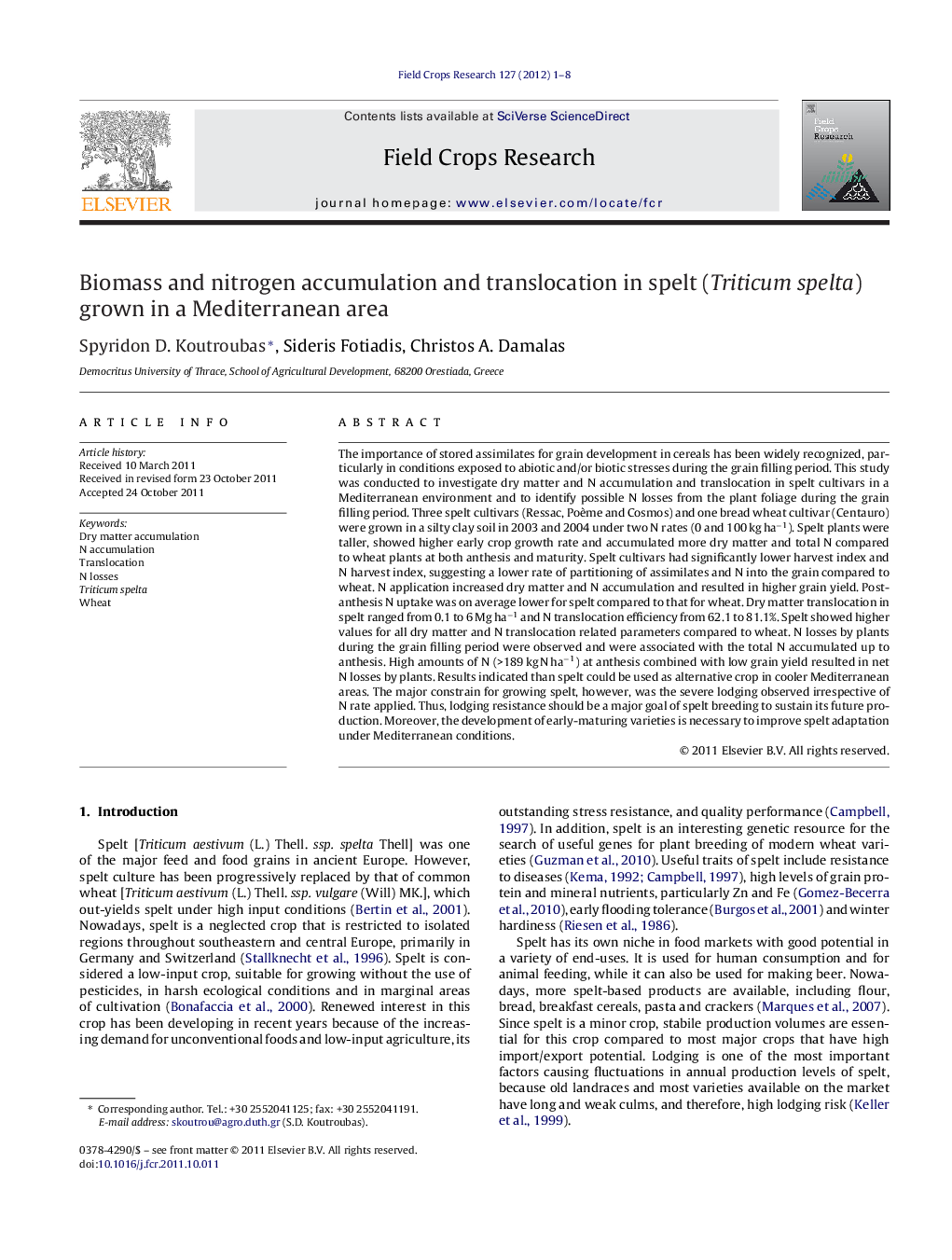| کد مقاله | کد نشریه | سال انتشار | مقاله انگلیسی | نسخه تمام متن |
|---|---|---|---|---|
| 4510692 | 1624736 | 2012 | 8 صفحه PDF | دانلود رایگان |

The importance of stored assimilates for grain development in cereals has been widely recognized, particularly in conditions exposed to abiotic and/or biotic stresses during the grain filling period. This study was conducted to investigate dry matter and N accumulation and translocation in spelt cultivars in a Mediterranean environment and to identify possible N losses from the plant foliage during the grain filling period. Three spelt cultivars (Ressac, Poème and Cosmos) and one bread wheat cultivar (Centauro) were grown in a silty clay soil in 2003 and 2004 under two N rates (0 and 100 kg ha−1). Spelt plants were taller, showed higher early crop growth rate and accumulated more dry matter and total N compared to wheat plants at both anthesis and maturity. Spelt cultivars had significantly lower harvest index and N harvest index, suggesting a lower rate of partitioning of assimilates and N into the grain compared to wheat. N application increased dry matter and N accumulation and resulted in higher grain yield. Post-anthesis N uptake was on average lower for spelt compared to that for wheat. Dry matter translocation in spelt ranged from 0.1 to 6 Mg ha−1 and N translocation efficiency from 62.1 to 81.1%. Spelt showed higher values for all dry matter and N translocation related parameters compared to wheat. N losses by plants during the grain filling period were observed and were associated with the total N accumulated up to anthesis. High amounts of N (>189 kg N ha−1) at anthesis combined with low grain yield resulted in net N losses by plants. Results indicated than spelt could be used as alternative crop in cooler Mediterranean areas. The major constrain for growing spelt, however, was the severe lodging observed irrespective of N rate applied. Thus, lodging resistance should be a major goal of spelt breeding to sustain its future production. Moreover, the development of early-maturing varieties is necessary to improve spelt adaptation under Mediterranean conditions.
► Spelt plants were taller and had higher early growth rate compared to wheat plants.
► Nitrogen translocation efficiency in spelt ranged from 62.1 to 81.1%.
► High early N accumulation combined with low yield resulted in N loss after anthesis.
► Breeding for lodging resistance is needed to sustain future production of spelt.
Journal: Field Crops Research - Volume 127, 27 February 2012, Pages 1–8